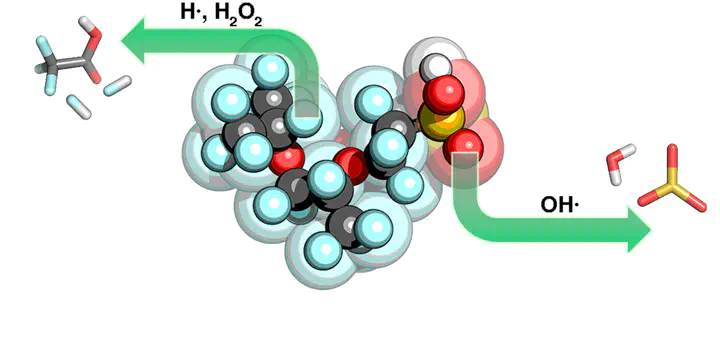Uncovering Alternate Pathways to Nafion Membrane Degradation in Fuel Cells with First-Principles Modeling

Abstract
Polymer electrolyte membrane fuel cells (PEMFCs) represent promising energy storage solutions, but challenges remain to maximize their utility. Nafion is frequently employed as the PEMFC membrane material, but degradation of Nafion can limit the life of PEMFCs. Using hybrid density functional theory (DFT), we carry out reaction pathway analysis on a range of candidate degradation pathways on both pristine and defect-containing models of Nafion. Degradation of pristine Nafion initiated by hydrogen radicals involves moderate (ca. 20 kcal/mol) barriers lower than alternative pathways initiated by hydroxyl radicals. We propose a new pathway for continued Nafion degradation after initial H radical attack in the presence of H2O2. This pathway has a modest barrier and provides a mechanistic basis for the production of experimentally observed trifluoroacetic acid and hydrogen fluoride. Our work suggests inherent limits to mechanistic studies that use hydroxyl radical as the sole radical source to model Nafion degradation under operating conditions. We observe that hydroxyl-radical-only degradation mechanisms have barriers competitive with hydrogen radical species only for initiation at carboxylic acid defects on the main chain or sulfonic acid functional groups on the Nafion side chain. We confirm our observations with DFT by comparison to correlated wave function theory. Our study highlights the importance of thorough first-principles modeling to identify the most probable, low-energy pathways for materials degradation.